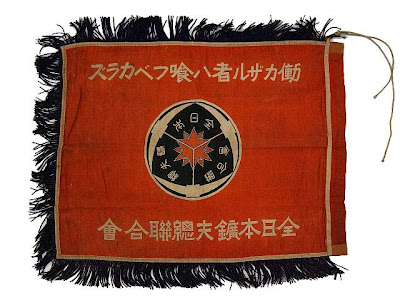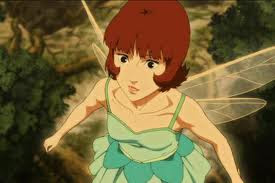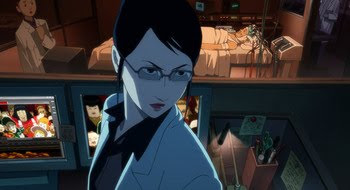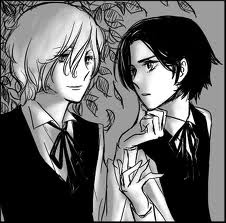
[Donate to the EMPU Pike River Miners Families Support Trust here]

The Japanese are, we’re all supposed to agree, a people much given to inscrutability, indirection, politeness and platitudes. Consider, then, this excerpt from a speech from miners’ union activist Minami Sukematsu, delivered to a meeting immediately before the Ashio riots in 1907. The speech - to set the tone for the evening - had the nicely inflammatory title “Showing Three Inches of Steel to Minami Teizō”:
“If the cruel and arrogant Director Minami does not reconsider his actions now, I shall show him three inches of steel and suggest that he commit seppuku. If that does not make him see the error of his ways, then we shall not refrain from resorting to extraordinary measures.” (136-7)
Not the sort of language my union taught me at delegate training! If showing three inches of steel doesn’t count as an extraordinary measure, the mine bosses at Ashio were soon to find out what did. Another speaker at the meeting, Nagaoka Tsuruzō, outlined the kind of figures the union was dealing with:
“The director is an unfeeling, cold-blooded man. Once when he was crossing the Hoso-o pass in a litter, he ordered the bearers to hurry, and they had to run at top speed all the way without being given a single rest to get their breath! When the world gets such a glimpse of the man, it’s not difficult to see the cruel and harsh manner in which he treats Ashio workers!” (136)

Working people don't have enough to eat!
That cruel and harsh manner detonated, in the days following this meeting, an intensive period of rioting, street fighting, arson and rebellion, which transformed the copper mining town of Ashio, and working-class politics in Japan more generally.
I’ve taken these quotes from Nimura Kazuo’s The Ashio Riot of 1907: A Social History of Mining in Japan, an immensely rich document of historical reconstruction, sociological analysis and political inspiration. Nimura - part of that extraordinary group of scholars grouped around the Ohara Institute for Social Research at Hosei University - has dedicated many decades of work to rescuing the miners of Ashio from the “enormous condescension of posterity.” His research restores to us a sense of the miners as historical agents, and places the riot within the context of labour choices, and labour strategy.
Nimura’s work is an extended polemic against what was, before his own pioneering studies, the dominant historiographical view of the riots: that they were a spontaneous event borne out of frustration and atomization. On the contrary, Nimura shows, the “leading participants in the riot belonged to brotherhoods, labour organizations akin to craft guilds, which had traditions going back to Tokugawa times. Totally unorganized workers would not have had the strength to start a riot.” (139) The fighting around Ashio reflected the difficulties the activists faced winning changes in the mines, and the intransigence of the mine bosses: their strategy of escalation, then, was one based on political calculation, not thoughtless despair.

The Ashio riot offers plenty of detail to deepen our understanding of combined and uneven development, too. Nimura criticizes historians who have looked at early labour unions in Asia only to measure them against “organizational forms that were standard in the West”, claiming that “they were not looking to examine concretely their actual function, but rather to hanging dismissive labels on them such as ‘feudalistic’ and ‘premodern.’” (138).
Events at Ashio, however, showed how the highly advanced and the premodern existed together, and shaped one another. Mine union groups grew out of older Tokugawa-era secret brotherhoods and wanderers’ groups, using these traditions in conversation with socialism and Christianity coming in from Tokyo-based intellectuals and activists, while the bosses maintained older guild and lodge systems alongside these. Of the lodge system in particular, Nimura observes, “the premodern character of the labour force continue to exist within the capitalist structure, as long as it enabled capitalist managers to exploit their workers effectively, and it was used by management only as long as it did not contradict that purpose.” (174). Just as Ashio was the most advanced mine in Japan yet had an unresolved and ancient problem at its centre - how to actually extract ore - so too the workers’ organizations combined far-sighted political consciousness and radicalism with older rituals, symbols and patterns.

Reading about Ashio produces one of those strange senses of distance and proximity I often feel reading labour history. With so many of the details, it’s hard to imagine a social world further from my own than the Ashio of the middle of the Meiji era. And yet, across that distance, just listing the issues the miners’ leaders thought to strategise over reveals a world uncannily similar to our own: casualisation, migrant labour patterns, authoritarianism in the workplace, management bullying, wage rates, stability, conditions.
There’s a final insight the Ashio miners have to give our movement now. Capitalism is well established by 1907 but, at this stage in the Meiji era, it isn’t yet within a class society adept at pretending not to be one. Tokugawa-era attitudes persist, and not just among the elite. The miners’ case is reported in two major journals, one, Shakaishugi, named for an idea (socialism), another, Shūkan heimin shinbun, a group: it’s the “commoners’ weekly.” That combination of idealism and insight served the miners well, and their self-identification with the “commoners” (rise with your class, not out of it!) still makes more sense than contemporary third-way blether about the aspirational.
I’ll end with the best and the worst of the story in the miners’ words themselves.
The worst, of course, was what they had to endure before their riots:
To be able to get any white rice or miso paste from the company store, you have to go down the mine, and you can’t make ends meet. When you go into debt because rice and miso paste cost more than you earn, you get money from your reserve fund…before you know it you’re in debt to the boss. If you can’t raise the output, the only thing you can do is get out. When you’re sick, no matter what the size of your family, you’re never given more than five days’ supply of rice…so in the end you starve.
The best was what the struggle made of the men and women who opposed this set-up. Here’s Nagaoka Tsuruzō again:
I went on to Innai silver mine in Akita prefecture in the winter…worked hard until the summer of the following year and made a lot of money, but lost it at gambling as usual and was dirt poor. I couldn’t stand it, so partly out of despair and partly because I liked a good fight, my greatest pleasure was in getting into scrapes with any number of other fellows. Once - I was reading The Seven Spears of Shizugatake at the time - a fight broke out amongst a bunch of miners. Fancying myself as the hero of the book, Katō Kiyomasa, and with only three others on my side, I waded in to a group of about twenty. We were so strong that they all lost heart, and we won the fight. In those days I used to love throwing others around in a fight and generally making a nuisance of myself, but now I prefer to suffer for others; I like working, spilling my blood, and enduring poverty to help improve their lives. This is what gives me pleasure now. (242)
Sources

I’ve taken these images from the website of the Ohara Institute for Social Research, Hosei University, a wonderful resource for anyone interested in the history of the workers’ movement in Japan.
Nimura Kazuo has made a number of his writings available in English here. You can buy his book The Ashio Riot of 1907: A Social History of Mining in Japan, ed. Andrew Gordon, trans. Terry Boardman and Andrew Gordon (Durham: Duke University Press, 1997) here.







































